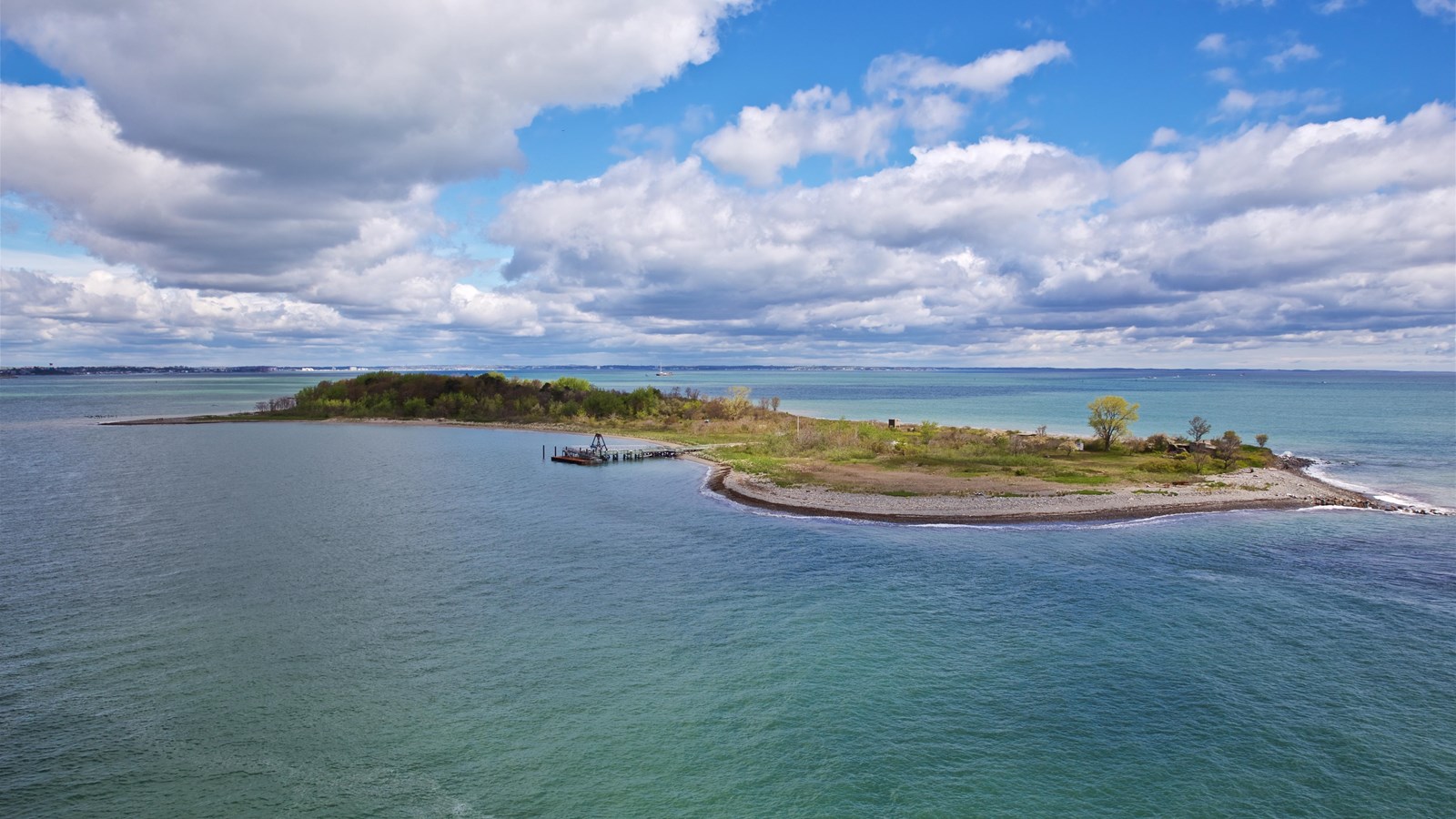Last updated: January 16, 2025
Place
Lovells Island

Boston Harbor Now
Beach/Water Access, Grill, Picnic Table, Tent Campsites, Toilet - Vault/Composting
Lovells Island sits just beyond Georges and Gallops Island. At high tide, the island is 119 acres, counting intertidal acres. Lovells Island is composed of three forested drumlins connected by marshes. In the 1930s the Civilian Conservation Corps planted a variety of trees and plants in an attempted to return vegetation to the island. Although the expansion of Fort Standish in 1939 led to the clearing of this vegetation, many species are beginning to find their way here once more.1
Prior to European contact, local Indigenous people accessed the island seasonally for fishing in the summer and moved inland in the winter. In the years after European settler colonization, the people of Charlestown used Lovells for timber, with half of the timber being saved for construction of a fort on Castle Island. The first "hut of refuge" in the United States was put on Lovells Island in by the Massachusetts Humane Society in 1787. The island also briefly served as a quarantine station for ships entering the harbor in the late 1600s. In 1782, a French Man-of-war ship called the Magnifique wrecked off Lovells Island.2
In December 1858, Lovells Island made Boston news when the headline "Escape of a Fugitive Slave from a Vessel in Boston Harbor" appeared in multiple Boston newspapers. A freedom seeker named Philip Smith had been discovered as a stowaway on a ship from Wilmington, North Carolina. Once discovered, he jumped overboard and swam to nearby Lovells Island. Frostbitten, he managed to hail a passing ship and make his way to abolitionists in Boston.3

An article regarding a freedom seeker, Phillip Smith, who stowed-away on a ship and swam to Lovells Island when discovered onboard. (Credit: The Liberator, December 31, 1858.)
Garrisoned during the US Civil War, Lovells island became the home of a training station called Lovells Island Military Reservation. In 1887, the Board of Engineers recommended that three-gun turrets be placed to fortify Lovells Island. By 1900, the Board of Engineers ordered seven concrete batteries to be constructed at the fortification, now named Fort Standish, and transferred to the Coast Artillery when finished.4
In 1903, two range lights were constructed on the island. They stood 400 feet apart, connected by a 7-foot walkway that also connected to the keeper's quarters and the oil house.5 Charles Jennings, former keeper of Boston Light became the keeper of the Lovells range lights. Harold Jennings, son of Charles Jennings, remembers his childhood fondly in his book A Lighthouse Family and recounts the years following World War I:
After World War I, they cut down on the complements and there were only caretakers. There were other families on the island besides us but they were up on the other end of the island. Their job was to keep the gun placements clean and make sure no one broke into them. Keep the different generators running on the island in case the guns had to be used; and general Maintenace...The disappearing gun emplacements had an archway to them which was as wide as a house... We would make echoes and climb the steel ladder. We would imagine we were part of the gun crew.6
Harold Jennings, worked as the keeper of the Lovells Range Lights for more than twenty years before the lights were ordered to be extinguished in 1939 to make room for the expansion of Fort Standish.
Fort Standish had all guns operational by 1940. The island offered a variety of training opportunities for soldiers, including a communication school, a gunnery, and a field school. Following World War II, the military declared Fort Standish excess. The Commonwealth of Massachusetts purchased the Island in 1958.7 Lovells Island has since become a part of Boston Harbor Islands National and State Park.
Learn More...
Footnotes
- National Park Service Boston Harbor Islands, "Lovells Island Facts," date accessed October 2022, https://www.nps.gov/boha/learn/historyculture/facts-love.htm
- Olmsted Center for Landscape Preservation, Cultural Landscape Report: Boston Harbor Islands National & State Park, Volume 2: Existing Conditions (Boston: National Park Service, 2017), 132-134.
- "Escape of a Fugitive Slave from a Vessel in Boston Harbor," The Liberator, December 31, 1858.
- Gerald W. Butler, S.F.H., The Guns of Boston Harbor (1st book: Gerald W, Butler, 2001), 75- 79.
- Boston Harbor Islands, "Lovells Island Range Lights Station," Boston Harbor Islands Newsletter (2021), Lovells Island Range Lights Station - Boston Harbor Islands.
- Harold B. Jennings, A Lighthouse Family (Orleans: Lower Cape Publishing, 1989),81.
- Butler, The Guns of Boston Harbor, 174.
